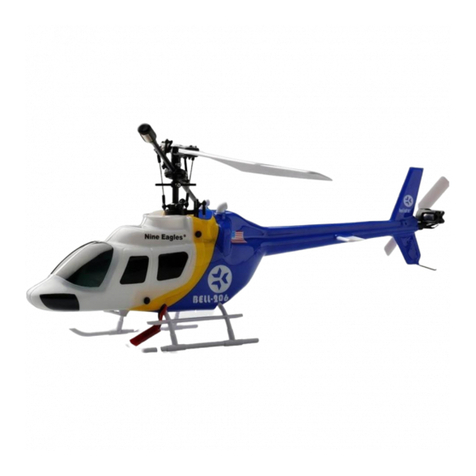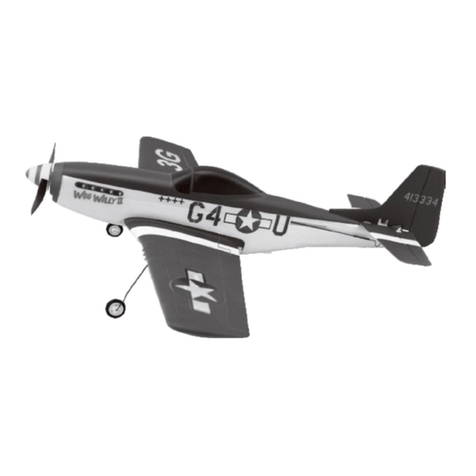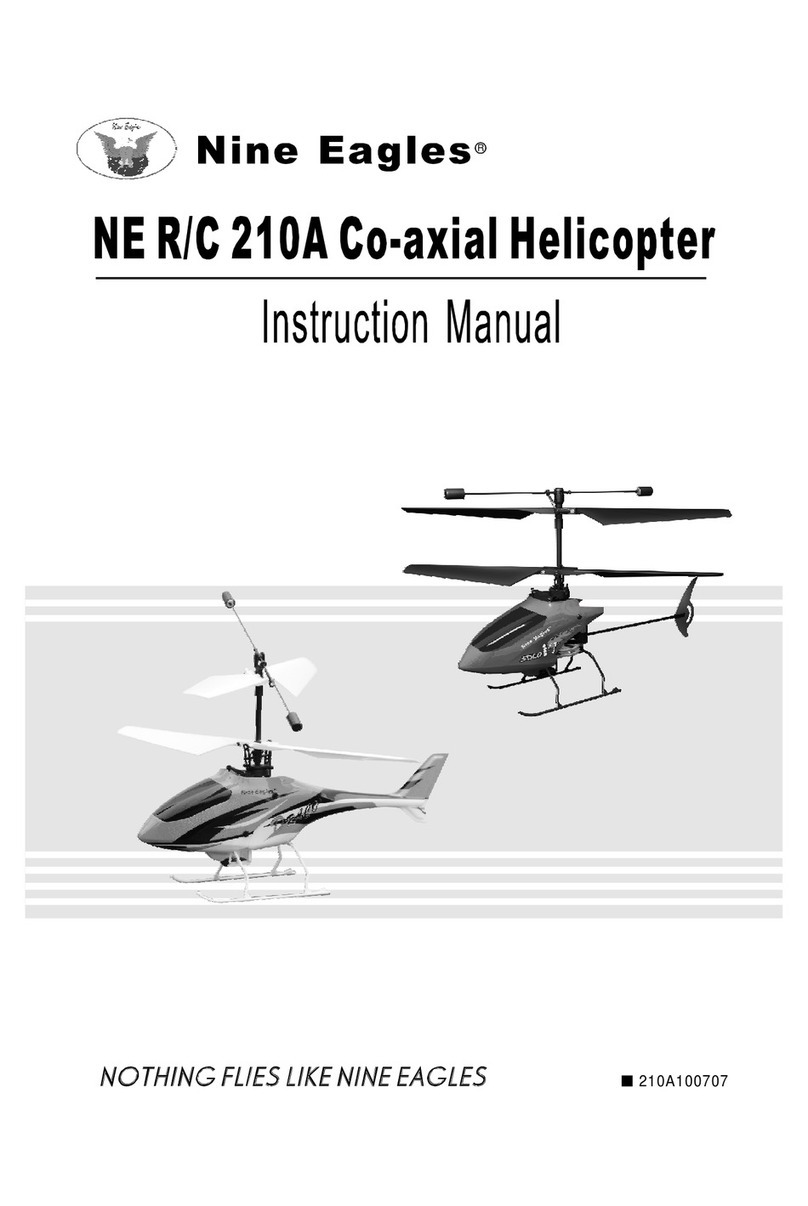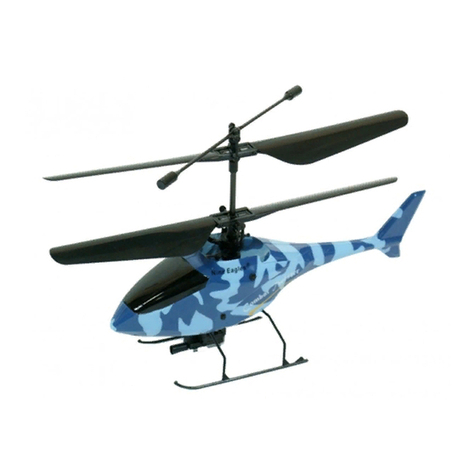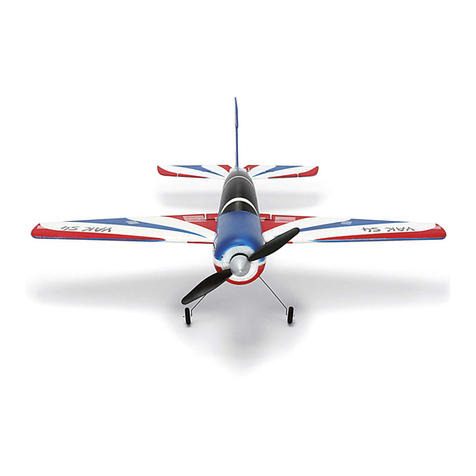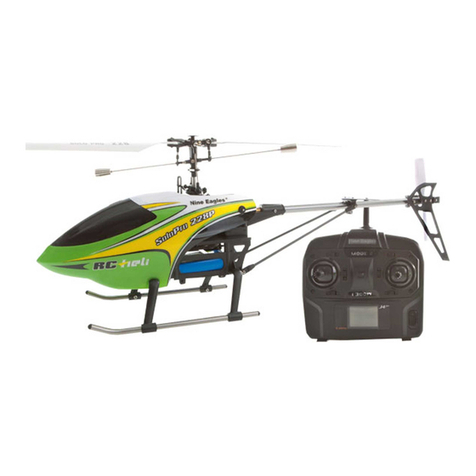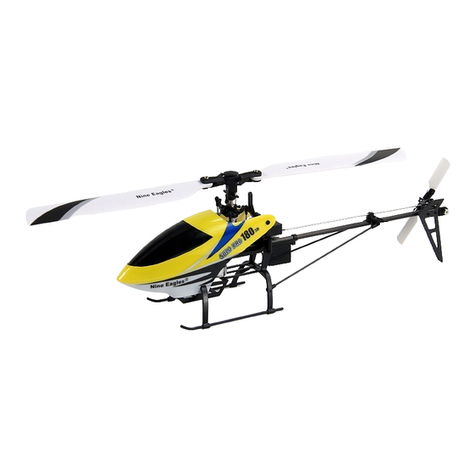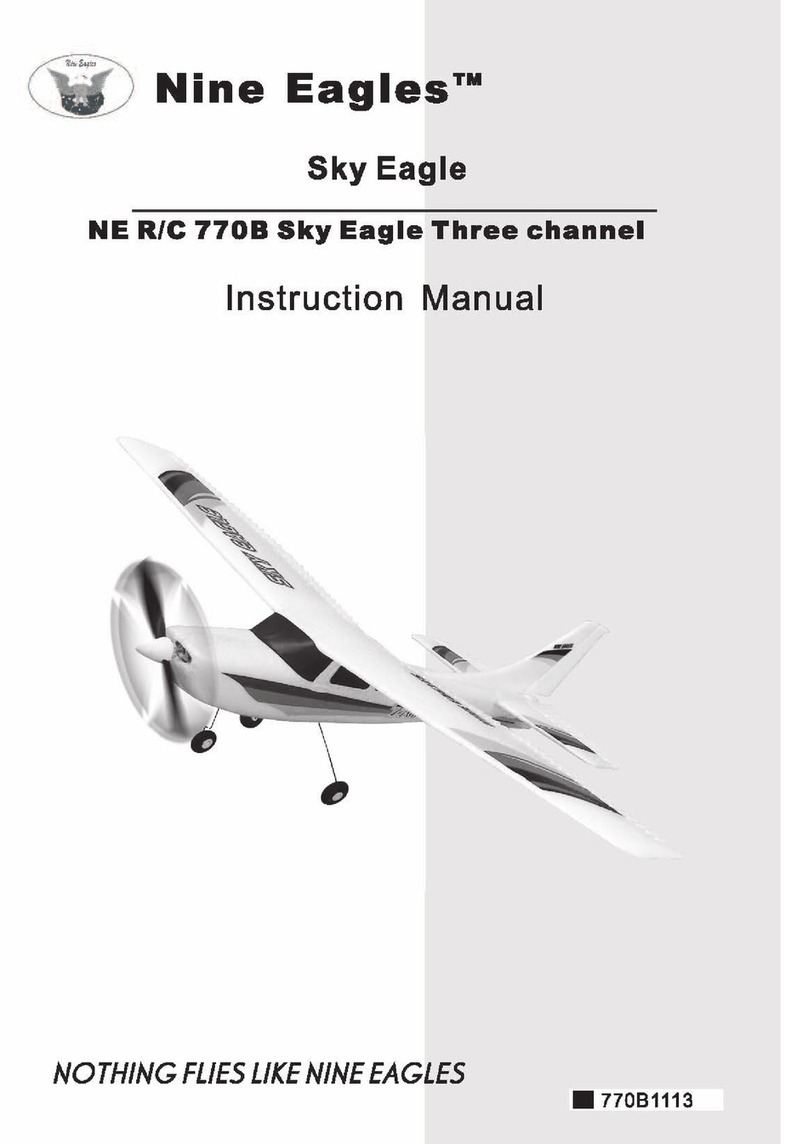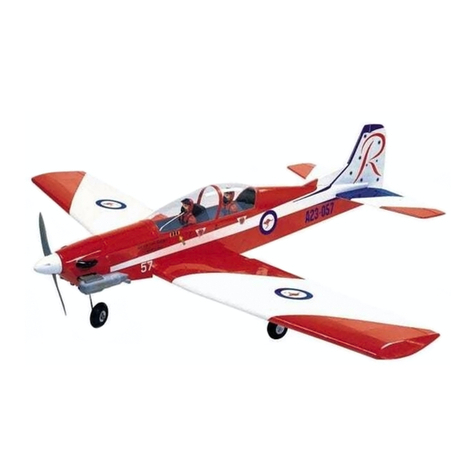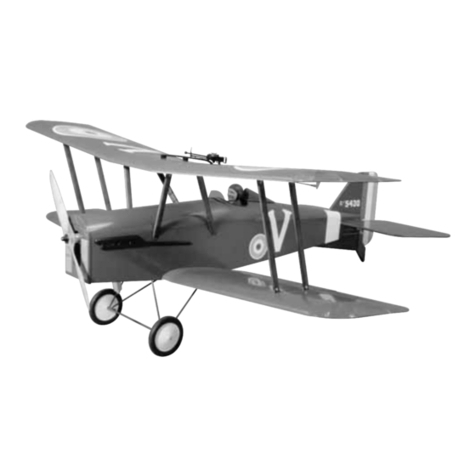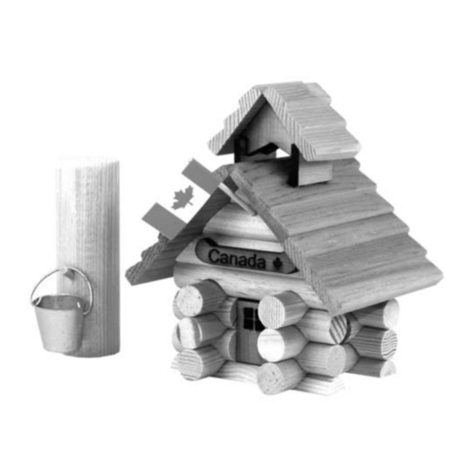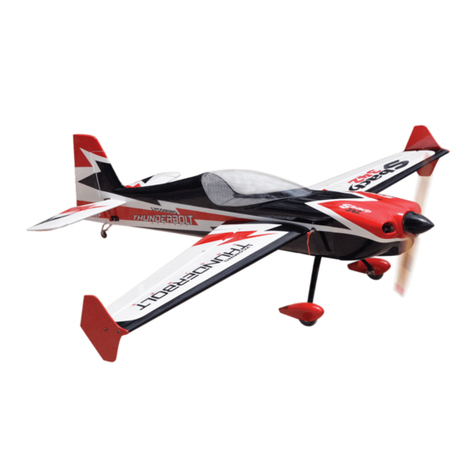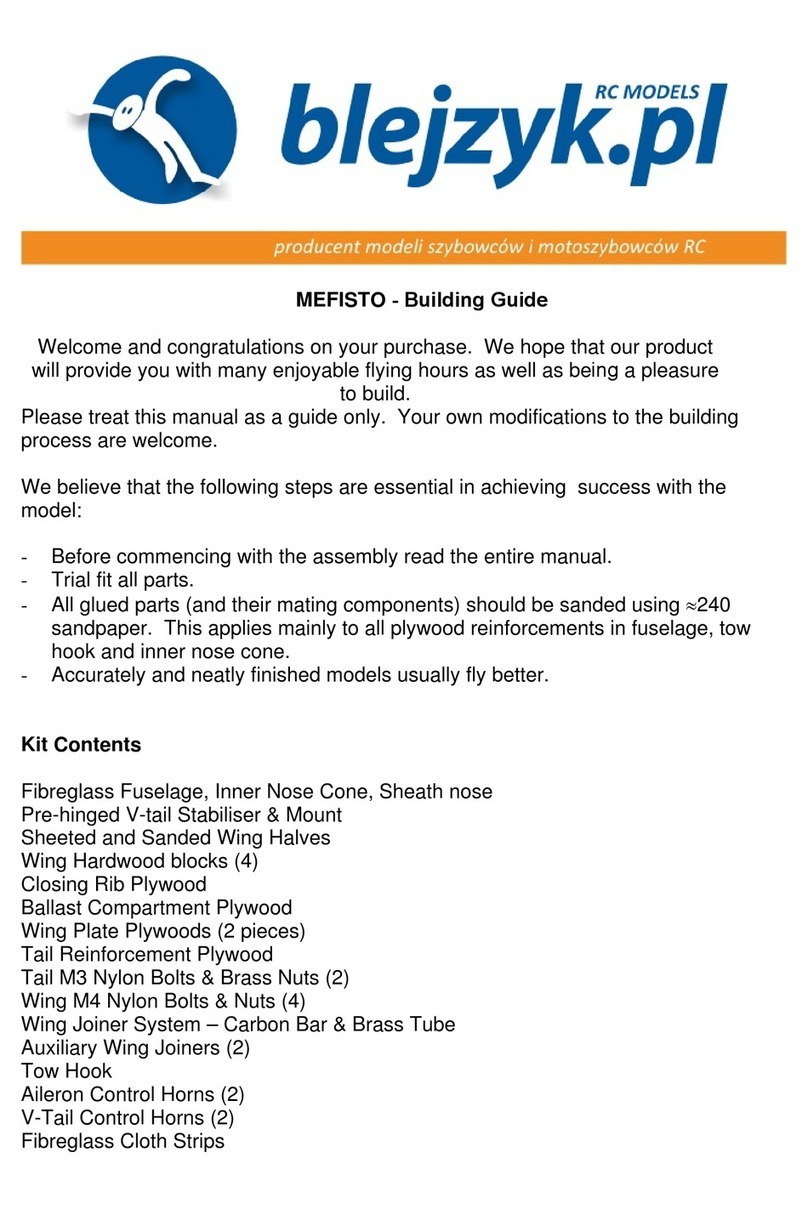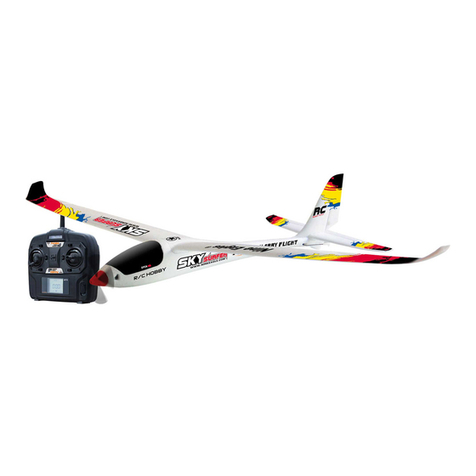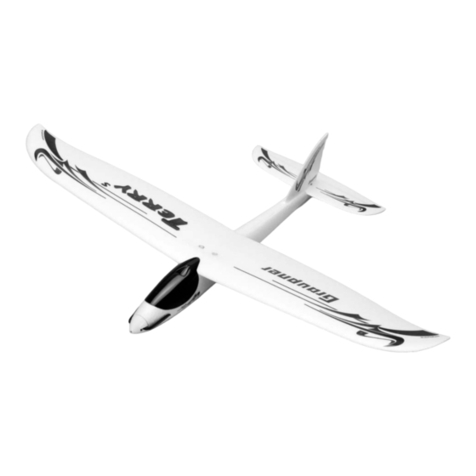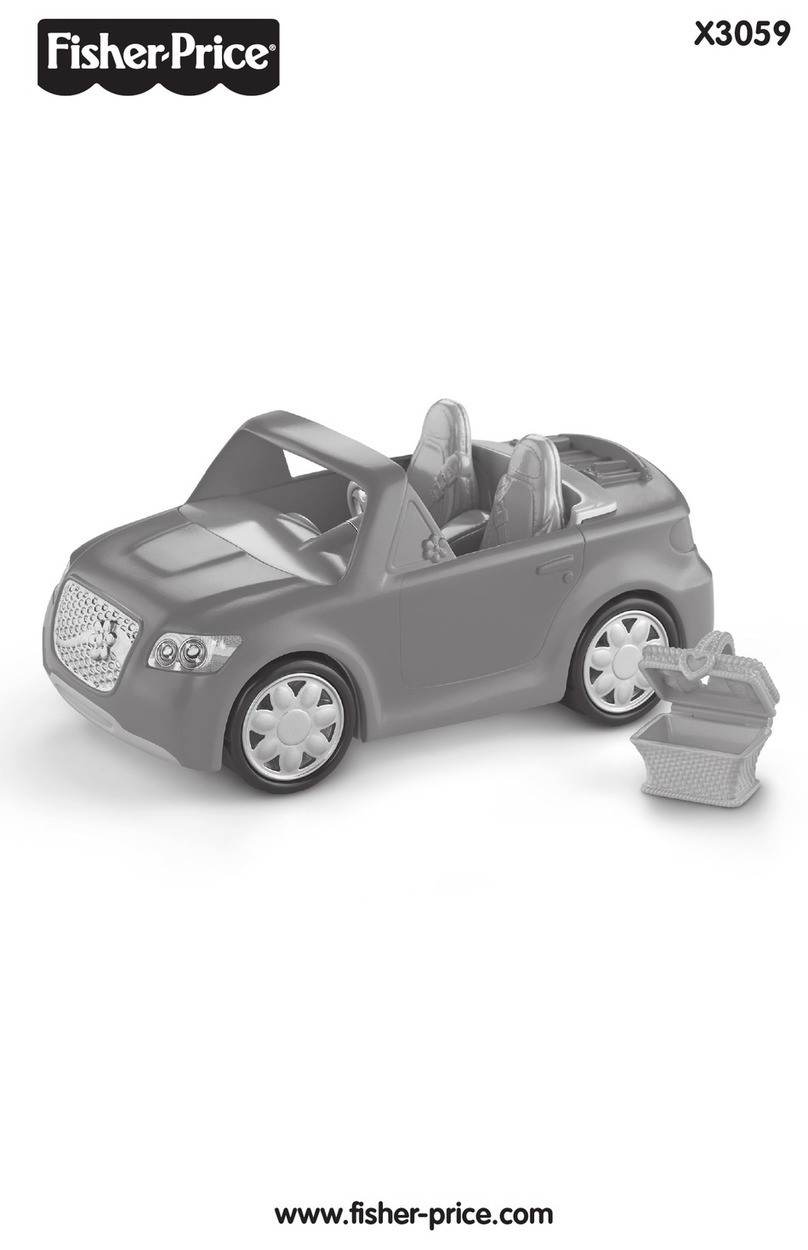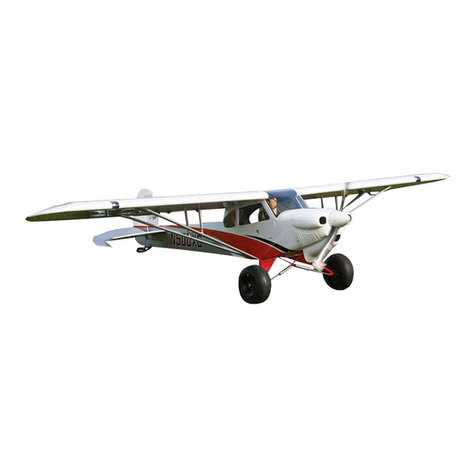
attitude. Initially, the model will gently ascend, but within a few seconds it will reach enough speed to climb.
Gently add “up” elevator to establish the climb. Once you have reached a safe flying speed at a comfortable
altitude (approximately 50’[15m]), work the controls as necessary to establish a gentle turn away from the
runway.
Flying
One thing to remember is that, when the plane is flying away from you, moving the aileron stick to the right will
make the plane bank to your right. However, when the model is flying toward you, moving the aileron stick to the
right will make the plane move to your left. Of course, the plane is still responding the same way, it’s just that
your orientation has reversed. This must be kept in mind while learning to fly (and is also a good reason to take
flight lessons from an experienced pilot!).
To establish a turn, “up” elevator (pulling back on the stick) is usually required along with aileron input to get the
model into a bank. To stop the turn, apply a small amount of opposite aileron.
Once you get the plane into the air and have climbed to a comfortable altitude, the first “order of business” will
be to “trim” the model for straight-and-level flight. The model flies best at approximately 3/4-throttle. Adjust the
trims on the transmitter to make minor control surface adjustments as necessary until the plane will fly straight
without any control inputs. Often, your assistant can reach over and adjust the trims for you.
Remember to keep the model high enough to give yourself time to make corrections, but don't let it get too far
away. Otherwise, it will be difficult to detect its attitude and which way it is going.
One final check before landing: see how the model will react when it's time to land and you cut the power. To do
this, while still at altitude, cut the motor power. The model should establish a gentle, downward glide path. This
is how the model will react when it's actually time to land. Add power and
climb back up to your original altitude. Try again, this time adding flaps. To climb, add throttle and immediately
take the flaps back out.Practice a few of these "climb and glides" to judge how far out you will need to be when
its time to land.
Landing
To land, fly down-wind past the landing area. Gently turn into the wind, add flaps and reduce the throttle so that
the airplane initiates an ascending glide path. If necessary, add power to extend the glide path to reach the
runway. As the model approaches and loses altitude, gradually and proportionally add "up"elevator to control
the glide path and altitude. Continue to apply elevator until the model touches down at which time you should be
holding full, or nearly full up elevator. This will cause the airplane to slow and settle to the ground. later, once
you have become more experienced with your Sky Climber, you can cruise around and perform slow “fly-bys”
with the flaps extended.
CAUTION: If, during a rough landing, the propeller becomes jammed and cannot rotate, the
battery and speed control will become very hot if you attempt to add power. Immediately
move the throttle down to stop the motor. If you fail to do this, the motor, speed control and/or
battery will be damaged.
After Flight
Disconnect the battery and remove it from the airplane.Then, turn off the transmitter. Allow the battery to cool
before recharging, or allow the motor to cool before installing another battery for the next flight.Inspect the
airplane to make sure nothing has become loose or damaged.
